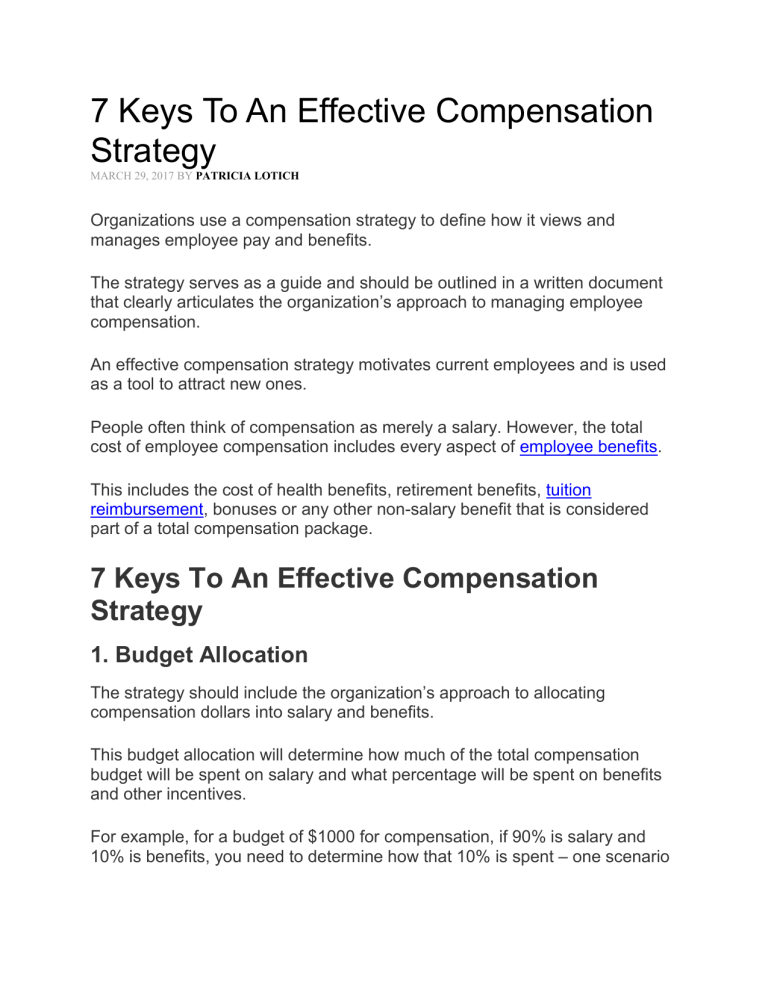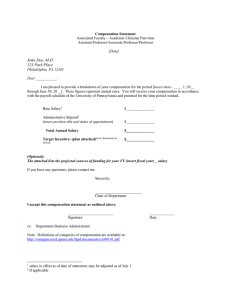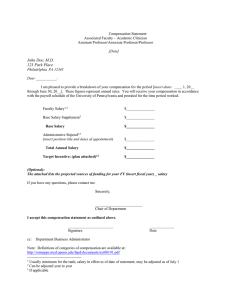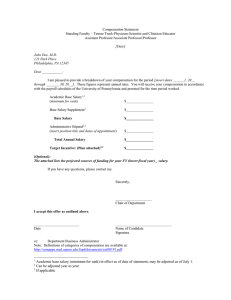
7 Keys To An Effective Compensation Strategy MARCH 29, 2017 BY PATRICIA LOTICH Organizations use a compensation strategy to define how it views and manages employee pay and benefits. The strategy serves as a guide and should be outlined in a written document that clearly articulates the organization’s approach to managing employee compensation. An effective compensation strategy motivates current employees and is used as a tool to attract new ones. People often think of compensation as merely a salary. However, the total cost of employee compensation includes every aspect of employee benefits. This includes the cost of health benefits, retirement benefits, tuition reimbursement, bonuses or any other non-salary benefit that is considered part of a total compensation package. 7 Keys To An Effective Compensation Strategy 1. Budget Allocation The strategy should include the organization’s approach to allocating compensation dollars into salary and benefits. This budget allocation will determine how much of the total compensation budget will be spent on salary and what percentage will be spent on benefits and other incentives. For example, for a budget of $1000 for compensation, if 90% is salary and 10% is benefits, you need to determine how that 10% is spent – one scenario might be – 7% on health benefits, 2% on retirement savings and 1% on tuition reimbursement. Allocating specific budget dollars to pay and benefits can help control labor, health care, and other miscellaneous benefit costs. 2. Develop Salary Ranges Develop salary ranges to ensure employee pay is competitive with other organizations. To be competitive, it is important to benchmark similar jobs within the same industry and to create a pay structure. Salary ranges can be developed internally by conducting research or utilizing sites like salary.com or payscale.com to determine average salaries in a particular geographic area. Smaller organizations often pay a vendor to help develop salary ranges, whereas larger organizations may have the HR resources to conduct the research internally. Regardless, it is important to look at all jobs and determine what work is done, how the job is slotted and establish salary ranges that match all job descriptions. 3. Salary Audits Markets change, therefore it is important to perform routine salary audits to ensure salary ranges reflect current compensation trends in a particular industry. When performing an audit, the goal is to determine how competitive are those particular jobs and what is the external market demanding. Ask the question, is it a growing or dying profession? It is important to pay attention to market changes and to stay current because failing to keep up with the competition can lead to loss of valuable employees. 4. Benefit Package Many organizations use benefit packages, in addition to salary, to attract and retain employees. Their goal is to be competitive with health, retirement, tuition reimbursement and other benefits because they understand that it can be the determining factor for a job candidate who is deciding whether to accept a position with an organization, or an employee who is considering leaving. For instance, I know employees who have stayed with organizations because the benefits were too good to walk away from. 5. Performance Management System It is important to have a structured performance management process to ensure employees are meeting corporate objectives and are assessed on a regular basis. This process should include the development of annual goals, annual performance appraisals and a structured process for coaching and mentoring employees. Compensation strategies can positively influence employee engagement and improve employee productivity. 6. Legal Compliance A well-defined compensation strategy will incorporate legal requirements to ensure the organization is in compliance with all federal and state laws. The goal is to eliminate natural biases made in hiring decisions and ensure compliance with DOL FLSA laws such as minimum wage, overtime pay or Lilly Ledbetter Fair Pay. 7. Structured Administration As with any other business process, the structure is important. Develop an annual review process, salary audit, raise process timeline and make sure someone is responsible for all compensation areas. A comprehensive compensation strategy can be the foundation for creating an environment that recognizes and rewards employee performance and helps to establish a strong culture of employee engagement. Organizations are only as successful as their approach to hiring the right people, setting clear expectations, managing performance and recognizing and rewarding employees for a job well done.



